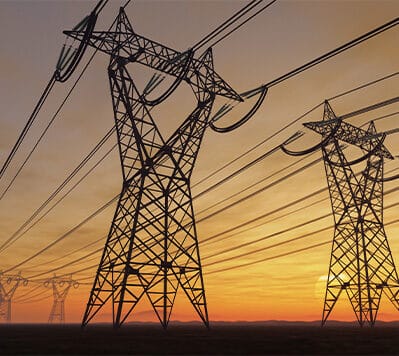Propane vs Electrical Cost | The Hidden Truth
We all strive to incorporate convenience into our lives. Drive-up windows are the norm for both fast-food restaurants and banking. Our phones provide immediate answers to our requests or searches. Digital streaming allows us to watch our favorite shows and movies at any time. Everything that we need is available – until it isn’t.
Herein lies the danger of relying on electricity for our home needs. Electricity must first be created at a power plant and then transported to our homes and businesses through an electrical grid. Furthermore, electrical power is subject to the whims of nature, transmission losses, plant or transmission failures, and a host of other unforeseen events which could leave your house in the dark.
Homeowners are required to purchase home insurance to protect, for what is many, their largest investment. Propane appliances and a propane backup power generator can increase a homeowner’s protection. If your appliances and home heating rely only on electricity, your home is vulnerable to a complete shutdown. Completely shut off: no heat, no air conditioning, no refrigeration, no lights, and no alternatives.
Propane appliances coupled with a propane backup generator allow you the freedom to live your life despite the shortcomings of the electrical grid. No electricity means no problem for those that have invested in propane appliances and a propane backup generator. Think of this propane combination as additional insurance. Also, the ability not to rely on electricity is a vote for independence and a vote for the environment.
So whether it is a gas range, dryer, water heater, fireplace or other appliances, saying yes to propane just makes sense. Free yourself from the reliance on electricity and start living a better life today.
The All Electric Home: Facts vs Myths
Myth #1: Electric Homes are Greener
A majority of domestic electrical production still relies on fossil fuels and coal, and Missouri is no exception. Using more coal for electrical production than almost all of its peers, Missouri ranks 49th out of 50 states for producing the dirtiest electricity in the nation.
Myth #2: Electric Homes are Reliable
The United States’ electrical grid is enormous and is not controlled by a single regulating body. It consists of more than 9,200 electric generating units and is connected to more than 600,000 miles of transmission lines.1 It is a spiderweb of corporate interests and governmental agencies with their own ideas and agendas on how the grid should be managed.
Two things must happen before you plug an appliance into an outlet and press the on button. Electricity must first be created, and then it must begin its journey through an aging grid, passing through numerous transformers and miles of lines before arriving on your doorstep. This journey is so complicated and eventful that approximately 60% of all electricity created is lost in this conversion process. 2
A word of warning to those who rely on an all-electric home: When the power goes out, your disappointment will be directly proportional to the amount that you rely on electric power. Losing power for everything for an extended period of time goes beyond an inconvenience and into a life-threatening situation. In 2021, a cold front moved into the State of Texas and lingered. Naturally, those that needed electricity to heat their homes turned on the thermostat and hoped for the best. Collectively, this put a demand on the electrical grid that it was unable to meet. The grid failed, and according to the Texas Tribune, 246 souls lost their lives in 2021 as a result of this grid failure.3
Myth #3: Electricity is Abundant
A more accurate statement may replace abundant with adequate. If the United States were to double its electrical output overnight, it would not change the reality that there is no way to deliver this to you, the consumer. There are hopes, plans and designs to strengthen the fragile and aging grid, but this may take decades if not longer to complete. The California governor recently warned the residents that there would not be enough grid capacity to charge electric vehicles. These grid vulnerabilities were brought to the nation’s attention in a recent 60 Minutes episode which reported on the overall health of the US electrical grid.
Sources
1 – The United States Department of Energy website: https://www.energy.gov/oe/activities/technology-development/grid-modernization-and-smart-grid#
2 – The United States EPA website: https://www.eia.gov/todayinenergy/detail.php?id=44436
3 – The Texas Tribune: https://www.texastribune.org/2022/01/02/texas-winter-storm-final-death-toll-246/
